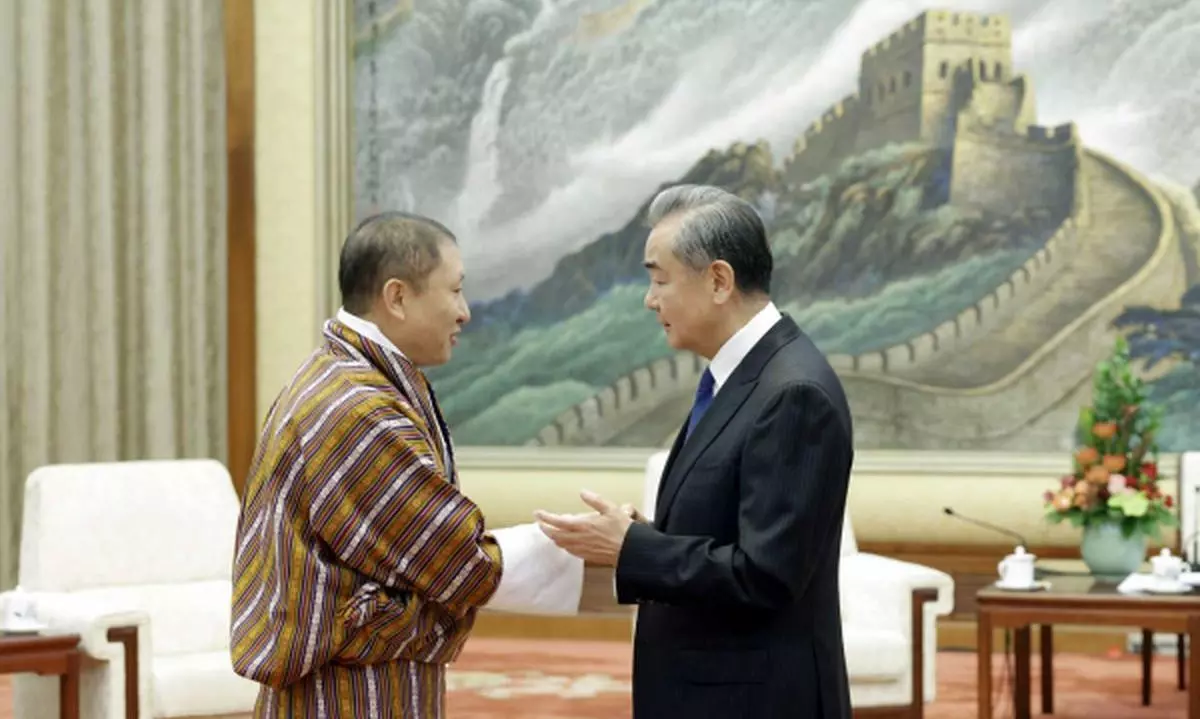
Why China-Bhutan border talks have set alarm bells ringing for India
There is a growing concern in India that Thimphu is not pressing hard enough to retain its claims on Doklam sans the tri-junction

Adding to India’s concern over growing Chinese influence in its immediate neighbourhood, Bhutan is moving fast to settle its long-pending border disputes with China and establish formal diplomatic relations with Beijing.
The Himalayan kingdom and China signed a “cooperation agreement” at the 25th round of their boundary talks held in Beijing on October 23-24.
Bhutan’s Foreign Minister Tandi Dorji made a historic visit to Beijing to take part in the talks. It was the first visit to China by any Bhutanese foreign minister. Sun Weidong, Vice Foreign Minister of China, led the Chinese delegation.
“During the talks, the two leaders of the delegations signed the Cooperation Agreement between the Government of the Kingdom of Bhutan and the Government of the People’s Republic of China on the responsibilities and functions of the Joint Technical Team (JTT) on the delimitation and demarcation of the Bhutan-China boundary,” read a joint press release issued after the talks.
Boosting bilateral ties
The two sides also exchanged views on enhancing bilateral relations and matters of mutual interest, the release added.
China stakes claim on a swathe of territories in Doklam and its nearby areas in the west, Pasamlung and Jakarlung in the north, and the Sakteng wildlife sanctuary in eastern Bhutan. These disputed geographic locations, particularly those in the west and the east, have implications for India’s security and strategic concerns.
Though the contour of the three-step road maps the two countries are following to demarcate their boundaries is not known, China for long has been pushing for a swap of territories.
It had proposed to Bhutan in 1996 to give up its claim over 269 square km of territories in Doklam and nearby areas of Dromana, Sinchulung and Shakhatoe in exchange for 495 square km in Pasamlung and Jakarlung in the north.
Beijing upped its ante further laying claim to Sakteng Wildlife Sanctuary spread over 740 square km in eastern Bhutan in 2020, soon after India proposed to construct a road connecting Guwahati in Assam to Tawang in Arunachal Pradesh via the kingdom’s Trashigang district where the sanctuary is located.
Apart from cutting down the distance between Tawang and Guwahati by approximately 150-155 km, the corridor would boost trade between Tawang and West Kameng in western Arunachal Pradesh and eastern Bhutan.
Resumption of talks
The Chinese claim to the wildlife sanctuary had created a hitch in the boundary talks. The resumption of the talks last week after a gap of seven years, however, is an indication that the two countries have found some meeting point.
“China is willing to work with Bhutan to meet each other halfway, seize the historical opportunity, complete this important process as soon as possible, and develop China-Bhutan friendly relations in legal form,” Chinese state-backed Global Times quoted the country’s foreign minister Wang Yi as saying about the boundary talks.
Incidentally, the Global Times, while reporting about the boundary talks, said that disputed areas between the two countries are “mainly located on the western and northern parts of the border.” This essentially means China is no longer holding to its claim to the sanctuary in the east as Bhutan has not given its nod to India’s proposed Tawang- Trashigang road corridor citing environmental concerns.
The sanctuary is the protected area of the migois, the Yeti-like snowmen. Their existence though is not scientifically confirmed, locals believe migois roam around the northern part of the sanctuary. The area is also home to Brokpas, a semi-nomadic community of yak herders.
Chinese pressure
India has reasons to believe that Bhutan’s reservation to the road has more to do with the Chinese pressure than environmental concerns.
The proposed road though was in close proximity to the sanctuary, but it was not supposed to pass through it and hence there would have been no threat to the fragile ecology of the area, a source in India’s Border Road Organisation (BRO) that was supposed to build the corridor told The Federal.
India now fears the possibility of Bhutan, caving under Chinese pressure for land swap, giving up its claim over its territories in the vicinity of Doklam in the west to retain areas in the north because the sacred Buddhist area of the Beyul Khenpajong falls in the disputed areas there.
Spiritual angle
“Beyuls”, in Tibetan Buddhism, are hidden valleys that the Padmasambhava designated in the 8th century CE as spiritual refuges. Padmasambhava, who is referred to as Guru Rinpoche or precious teacher, was the founding father of Buddhism in Bhutan and is regarded as the patron saint of the country. He is also often called the “Second Buddha”.
China has reportedly established villages in the disputed areas both in the north and west.
There is a growing concern in India that Thimphu is not pressing hard enough to retain its claims on Doklam sans the tri-junction. A source said Bhutan has reiterated to India that no agreement with China would in any way go against India’s interests.
But the problem is for Bhutan, India’s interest is limited to a narrow tri-junction in the ridges of southern Doklam overlooking the strategic “Siliguri Corridor” that connects the rest of India with its landlocked north-eastern region, the source added.

